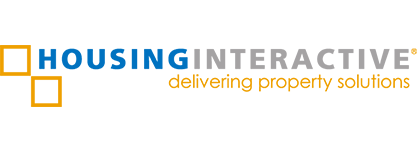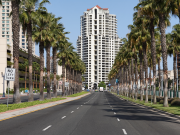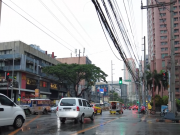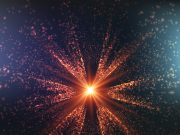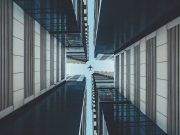The robust BPO sector and significant foreign investment have fueled phenomenal growth in the Philippine office market. As a result, a handful of major players have emerged, dominating the landscape of towering office spaces in the metro and various parts of the country. Welcome to Part 1 of this comprehensive feature.
We’ll explore who controls the most coveted square footage, the iconic buildings that define the skylines, and the factors that matter most when choosing your office space in this dynamic market. From Megaworld’s impressive portfolio to the ownership of landmark structures like Ayala Triangle, get ready for a comprehensive look at the movers and shakers of the Philippine office space arena.
The Rise of the Philippine Office Market
The Philippine office market has undergone a remarkable transformation in recent years, transitioning from a modest player to a thriving hub for business activity. Let’s explore the key factors that fueled this impressive growth:
1. BPO Boom
The business process outsourcing (BPO) industry has been a major driver. With its strong English-speaking workforce and competitive labor costs, the Philippines has become a magnet for global companies seeking to outsource operations. This surge in BPO activity created a significant higher demand for high-quality office space.
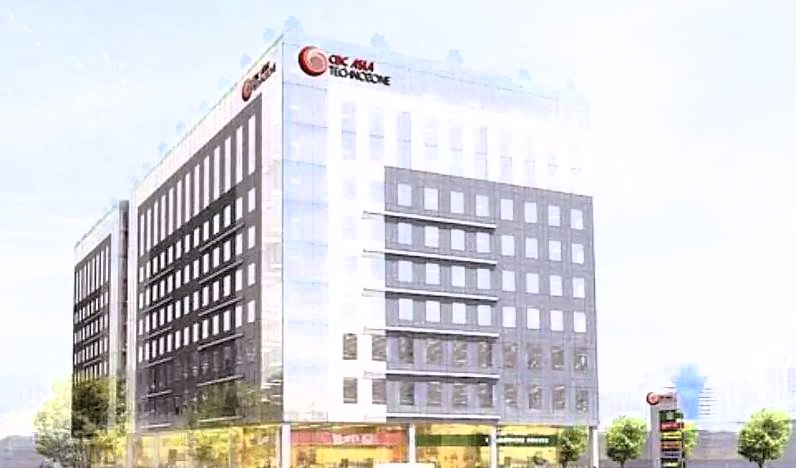
The Philippines’ BPO industry is a major economic force, employing 1.7 million Filipinos and contributing an estimated 7-8% to the GDP. The Philippines’ highly skilled workforce and competitive labor costs attract Western companies to outsource their operations. Our competitive advantage is further strengthened by the fact that the Philippines is a highly sought-after location for outsourcing, with over 97% of the population speaking English fluently. Competitive pricing isn’t the only perk. The BPO industry boasts high-quality services, with many companies achieving international certifications. Along with government initiatives that bolster the sector, it transforms the Philippines into a powerhouse, attracting multinational corporations seeking efficient outsourcing solutions and generating a whopping $40 billion in revenue in 2022.
2. Rising Foreign Investment
Increased foreign investment in the Philippines further boosted the office market. The country’s stable political environment, improving infrastructure, and skilled workforce attracted international businesses, many of which established regional headquarters or branch offices here.
According to data released by the Philippine Statistics Authority (PSA) on May 16, 2024, the Philippine government secured Php148.43 billion in foreign investments during the first quarter of 2024. These investments were made through several investment promotion agencies (IPAs), including:
- Board of Investments (BOI)
- Clark Development Corporation (CDC)
- Cagayan Economic Zone Authority (CEZA)
- Philippine Economic Zone Authority (PEZA)
- Subic Bay Metropolitan Authority (SBMA).
This influx of foreign capital translates to a need for office space to house new operations and employees.
3. Economic Growth
The Philippines has enjoyed a stretch of sustained economic growth, leading to a rise in domestic companies seeking modern, cutting-edge office design spaces to accommodate their expansion plans.
The Philippine Statistics Authority (PSA) reported a gross domestic product (GDP) growth rate of 5.7% in the first quarter of 2024. This economic expansion signifies a growing demand for office space from local businesses looking to scale up their operations.
These factors position the Philippines as a major player in the global office market, attracting businesses seeking a cost-effective and dynamic location.
Owning the Skyline: Top Office Tower Owners
Tall, glass-and-steel structures dominate the skyline, defining the identity and economic heart of cities in the dynamic urban landscape of the Philippines. However, who are the titans responsible for these amazing structures? We’ll uncover the strategies, portfolios, and impact of these key players, revealing who owns the sky in major cities in different regions of the country. Here’s how they differ:
A. Building Property Owners
These are the ultimate authority figures. Building property owners own the real estate and may choose to rent it out, becoming office landlords. They hold the title to the land and buildings and can choose to keep or rent them. Some owners are hands-on, managing the property themselves, while others hire professionals.
B. Office Landlords
These are building property owners who have chosen to rent out their space. They take on a more active role, managing and maintaining the property, dealing with repairs, and maintaining tenant relations. Potential building tenants will likely have direct contact with their office landlords.
C. Developers
These are the visionaries. Developers are the creative force behind real estate, initiating and overseeing the entire process of building a structure, from acquiring land to securing potential tenants. They identify opportunities and oversee the whole construction process of a building, from conception to completion. Once finished, they may sell the building, lease it out, or even hold onto it for long-term investment.
D. Property Managers
These are the operational experts. Building property owners or office landlords hire property managers to handle the day-to-day property management tasks. This includes collecting rent, scheduling maintenance, screening tenants, and ensuring the smooth running of the building. They act as a bridge between the owner and the tenant.
| In a Nutshell: |
| • | Building Property Owners: Own the real estate. |
| • | Office Landlords: Actively manage and rent out their property. |
| • | Developers: Create new buildings. |
| • | Property Managers: Handle day-to-day operations for office landlords. |
Do the biggest office landlords always own the most recognizable office towers?
Not necessarily. While some major office landlords, like Ayala Land or Megaworld, own prominent office towers within their portfolios, others may focus on developing clusters of office buildings rather than individual landmarks. Additionally, independent companies or investment groups might own some of the most recognizable office towers in the Philippines.
Notable Office Towers and Ownership
| SM Prime Holdings | Mega Tower, Ortigas Center, Mandaluyong |
| Ayala Land | One Ayala, Ayala Avenue, Makati |
| Robinsons Land Corporation | Robinsons Cybergate 3, Pioneer Mandaluyong |
| Federal Land, Inc. | GT International Tower, Ayala Ave. cor. H.V. dela Costa Street, Makati |
| Megaworld Corporation | Alliance Global Tower, Uptown Bonifacio, Taguig |
| Filinvest Development Corporation | Filinvest Axis, Alabang, Muntinlupa |
Identifying the Biggest Office Landlords
We’ll use Gross Leasable Area (GLA) as the key metric to measure the dominance of office space ownership. GLA refers to the total area available for tenants within a building or a landlord’s entire portfolio. Here’s a breakdown of the biggest office landlords in the Philippines, based on their estimated GLA, along with their specializations and strengths:
1. SM Prime Holdings, Inc.
In fiscal year 2023, SM Prime’s Commercial Properties Group (CPG) delivered a strong performance. The group generated Php6.78 billion in revenue, translating to Php4.45 billion in operating income. It boasts 18 office buildings, encompassing a total gross floor area of 1.6 million square meters. This impressive showing is a direct result of their strong portfolio. Their strength lies in strategically integrating office buildings within their vast network of shopping malls, offering tenants convenient access to a wide range of amenities and high foot traffic. They hold a portfolio of 85 malls in the Philippines and 8 in China, totaling over 10.8 million square meters of GFA.

CPG cuts out the middleman for businesses seeking Philippine office space. They actively develop and lease high-quality buildings in prime Metro Manila locations and other strategic areas. CPG goes beyond just development; they manage existing buildings and other land holdings, ensuring everything runs smoothly for their tenants. Tech and BPO companies can find their perfect fit at the modern and iconic E-comCenters within the Mall of Asia Complex. For those with specific needs, SM Cyber Buildings offers BPO-friendly office spaces in Makati City. These buildings cater to a variety of preferences with both customizable “build-to-suit” and move-in-ready “ready-to-use” options. CPG is not stopping there; they are working hard to bring SM Cyber Buildings to more emerging business centers around the Philippines.
2. Ayala Land, Inc.
Ayala Land, a champion of sustainable and well-planned communities, leverages its massive land bank of over 11,000 hectares to create expansive, integrated developments that prioritize sustainability. As the Philippines’ leading property developer, their success is showcased in iconic projects like the Makati CBD and Fort Bonifacio Global City (Fort BGC). Ayala Land extends its reach beyond traditional development with ventures like the UP-Ayala Land Technohub and Ayala Land Manila Bay commercial estates. They cater to modern work styles with Vertis North and Alabang Town Center co-working spaces. Additionally, Ayala Land provides industrial solutions across the country, managing factory buildings, warehouses, and cold storage facilities in Laguna, Cavite, Batangas, and Cebu.
Ayala Land caters to diverse property needs. Individuals and businesses can purchase office space through subsidiaries like Ayala Land Premier, Alveo, and Avida. They also actively offer commercial and industrial lots for sale across various estates throughout the country. For those seeking to lease, Ayala Land manages a vast portfolio encompassing shopping centers (totaling a combined 2.1 million sqm of GLA) and office buildings (offering 1.4 million sqm of GLA). For travelers, Ayala Land Hospitality provides a delightful mix of accommodation options, from renowned brands like Fairmont and Raffles to their Seda chain hotels and breathtaking resort destinations like El Nido.
3. Robinsons Land Corporation
Robinsons Land Corporation is a leader in office space management, currently overseeing 31 buildings that offer a combined 741,000 sqm of leasable space. Their impressive portfolio boasts an industry-high 87% occupancy rate. To further strengthen their offerings, Robinsons Offices is set to complete GBF Center 1 in 2024. This state-of-the-art, 52,000 sqm Grade A office building will cater to a diverse range of tenants, including traditional businesses, multinational corporations, and BPO companies. Additionally, the upcoming completion of Iloilo Building 3 will push their total leasable space even further, reaching a projected 825,000 sqm. This expansion demonstrates Robinsons Offices’ commitment to providing high-quality office solutions across the Philippines.
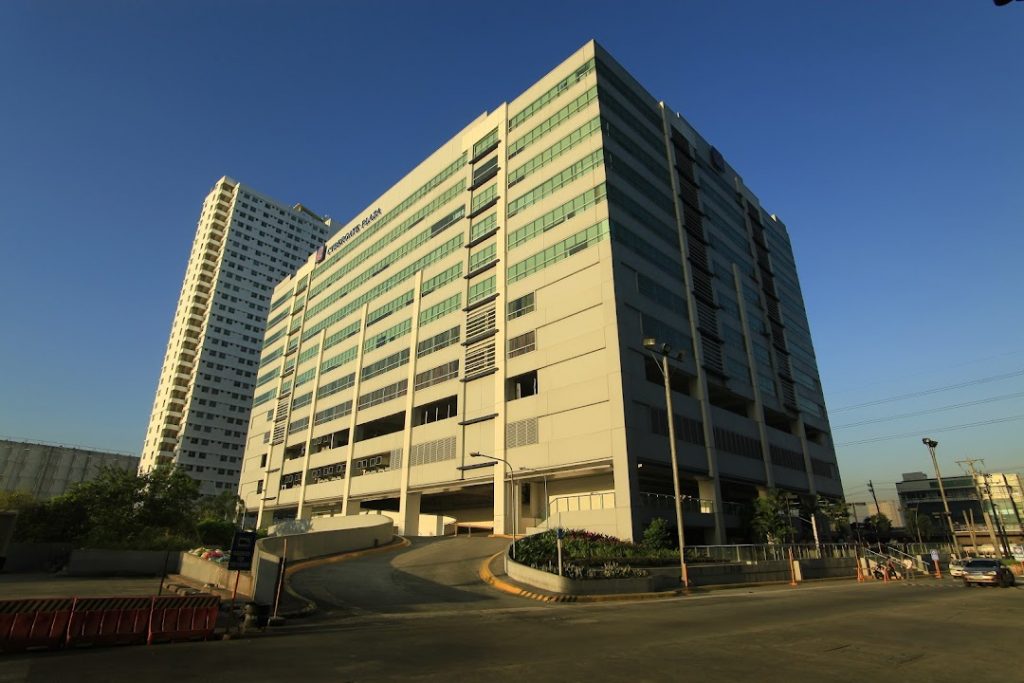
Robinsons Land Corporation’s real estate investment trust (REIT) subsidiary, RL Commercial REIT (RCR), is a sustainability leader in the Philippines. RCR boasts an impressive 16 buildings within its portfolio, offering a total of 480,479 square meters of leasable space. They are committed to environmental responsibility, with a remarkable 94% occupancy rate across these green-certified buildings. RCR takes pride in being the Philippines’ first REIT EDGE Champion. This well-deserved title reflects their dedication to sustainability, as 62% of their leasable space is certified green. Currently, they have 4 LEED-certified and 6 EDGE-certified buildings, with plans to expand their portfolio by adding 3 more green buildings by the end of 2024. This ongoing commitment to sustainable development underscores RCR’s “Building it Better, Together” campaign.
RLC is firing on all cylinders across its diverse business sectors. Their “work.able” brand is expanding its presence as a flexible workspace provider, with nearly 2,100 workspaces across key cities. The logistics and industrial division, RLX, is a standout performer with a projected 24% revenue increase in 2023 thanks to their well-located warehouses and ambitious expansion plans involving a substantial amount of new leasable space. The company’s mall portfolio is poised for growth with the upcoming completion of Robinsons Pagadian and the high-end Opus Mall in the Bridgetowne Destination Estate in Quezon City. These additions will bring their total leasable space to 1.67 million square meters. Finally, rising hotel rates, food and drink sales, and a rebound in event reservations contributed to the hospitality industry’s 96% revenue increase in 2023. With this encouraging momentum, RLC is well-positioned for sustained success in all its business segments.
4. Federal Land, Inc.
Federal Land, a GT Capital Holdings, Inc. subsidiary, is a prominent property developer in the Philippines. Renowned for its high-quality developments targeting luxury and upper-middle-income segments, Federal Land boasts a solid track record spanning over 50 years. They excel in creating innovative residential projects, commercial spaces, and meticulously planned mixed-use communities. Their strategic land bank, primarily concentrated in key Metro Manila cities, ensures a steady stream of future projects. They contributed substantially to GT Capital’s remarkable 82% core net income growth in 2023 with their Php2.1 billion net income, demonstrating their focus on prime locations.
Federal Land goes beyond residences, offering a complete lifestyle experience. Their commercial portfolio includes retail spaces like Mitsukoshi and The Shops in Bonifacio Global City, Blue Bay Walk along Diosdado Macapagal Blvd. in Pasay, and Blue Wave Mall in Marikina City. Federal Land also develops contemporary office spaces for the corporate sector, such as the Philippine AXA Life Centre and GT International Tower in Makati, the Metrobank Financial Center in Fort BGC, and iMET BPO in Pasay City. They also have event venues like Le Parc and Le Pavillion for special occasions. To further elevate the experience, Federal Land partners with international luxury hotels for a truly enriching lifestyle.
Federal Land NRE Global, a unit of Federal Land, is expanding its portfolio with three new projects. The biggest highlight is the 600-hectare Riverpark in Cavite, envisioned as the “Next Gen City of the South.” This master-planned community boasts a unique mix of nature with rivers, streams, and a central park alongside residential areas, commercial spaces, offices, schools, and hospitals. Easy access is ensured through major roads. They are also developing Metro Park in Pasay City and The Observatory in Mandaluyong City. In addition to these new developments, Federal Land has a pipeline of 10 townships, including existing projects like Grand Central Park in Bonifacio Global City. They also have new launches planned for Marikina, Laguna, and Cebu.
5. Megaworld Corporation
Renowned for its integrated townships, Megaworld holds the top spot, with impressive office spaces. They excel at creating self-contained business districts with a mix of office buildings, residential spaces, shopping malls, and leisure facilities. This integrated approach caters to companies seeking a complete live-work-play environment for their employees, particularly in locations like McKinley West in Taguig City and the Iloilo Business Park.
Megaworld keeps expanding its footprint, adding a significant 69,000 sqm of office space and 33,000 sqm of retail space in 2023 alone. This brings their total office GLA to 1.5 million sqm and retail GLA to 517,000 sqm, with the highlight being the opening of the country’s biggest Landers Superstore in Bacolod City. Additionally, 100,000 sqm of retail space will be added across Cavite, Rizal, Pampanga, Bulacan, Bacolod, Cebu, Davao, Boracay, and Palawan by year-end. This significant growth strengthens their position as a key player in shaping the Philippine office and retail landscapes.
6. Filinvest Land, Inc.
Known for innovative and sustainable developments, Filinvest Land secures a place at the top with its dedicated office spaces across the region. Filinvest Land offers office space solutions across 34 developments. They’ve created a separate real estate investment trust, Filinvest REIT Corp. (FILRT), which currently holds 17 of their office buildings. Filinvest Land is the sole owner of all other offices, both built and under construction. In 2023, they completed two new projects: Axis Tower Four in Northgate Cyberzone with a spacious 39,340 sqm of leasable office area and Marina Town in Dumaguete, offering 4,225 sqm for office use. Strategic location is a priority for Filinvest Land, ensuring their office buildings are situated within key business districts with easy access to major roads, various transportation options, and a highly skilled workforce nearby.
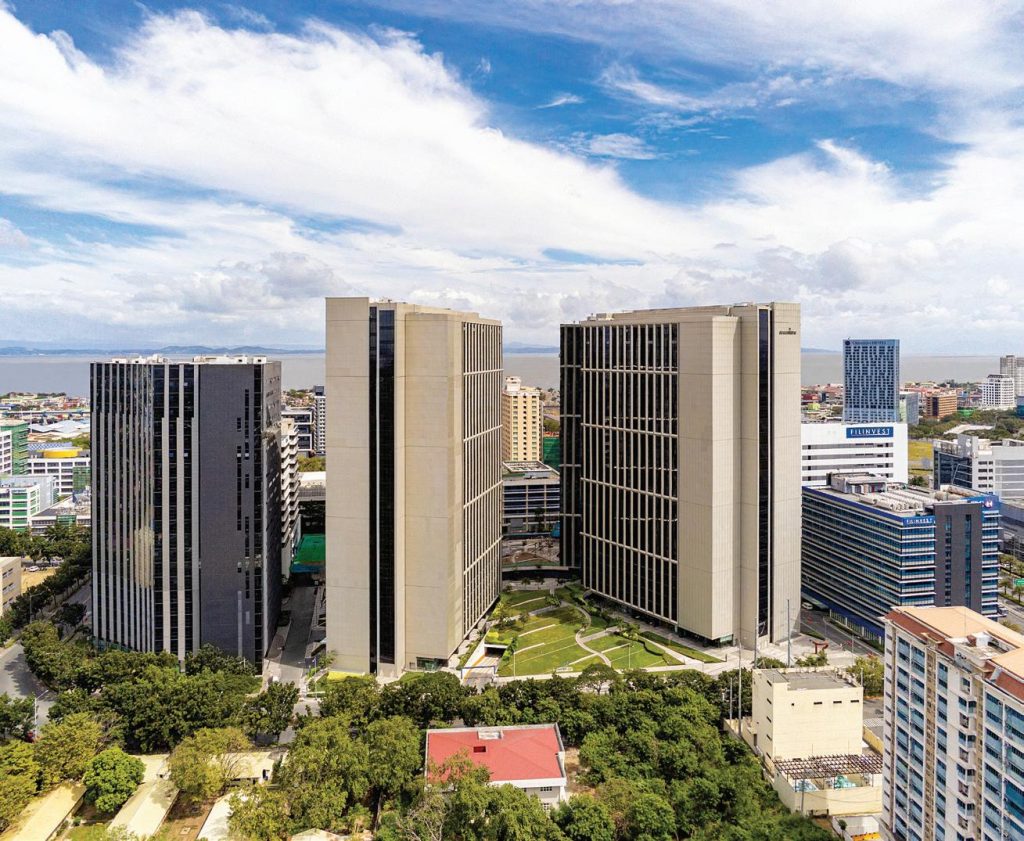
By implementing green features and pursuing certifications like LEED and EDGE to minimize environmental impact, Filinvest Land prioritizes sustainability in its office buildings. In 2023, One Filinvest, a building located in Ortigas Center, became certified LEED Gold. The EDGE certification that six of their buildings received in September 2023 and the sustainability awards they received that same year serve as further proof of their obligation to Filinvest REIT. With 301,362 sqm under Filinvest REIT, Filinvest Land anticipates growing its office portfolio to 704,000 sqm by 2024. New projects like Studio 7 in Quezon City, Filinvest Buendia in Makati, the expansion of One Filinvest in Ortigas, and two new towers at Filinvest Cyberzone Cebu will drive this growth. Filinvest Land positions itself as a leader in the real estate markets of Asia and the Philippines by emphasizing sustainability and innovation.
Factors to Consider When Choosing an Office Space in the Philippines
Selecting the ideal office space in the Philippines requires careful consideration of various factors. Here’s a breakdown of key aspects to evaluate, along with specific examples to illustrate each point:
1. Strategic Location: Considering Amenities, Transportation, and Talent
Imagine your company is a dynamic tech startup seeking a collaborative and vibrant work environment. You might prioritize an office space in Fort Bonifacio Global City (Fort BGC), developed by Ayala Land. BGC offers a walkable environment with numerous cafes, restaurants, and co-working spaces, fostering interaction and fostering a sense of community. Additionally, its proximity to major transportation hubs like MRT stations and access to a young, tech-savvy talent pool make it an attractive location.
2. Beyond Square Footage: Decoding Building Features and Amenities
Let’s say your company prioritizes sustainability and employee well-being. Consider an office tower like One Ayala in Makati City, owned by Ayala Land. This LEED-certified building boasts energy-efficient features, ample natural light, and on-site amenities like fitness centers and green spaces, promoting a healthy and environmentally conscious work environment.
3. Striking a Balance: Optimizing Rental Costs and Lease Flexibility
Rental rates can vary significantly depending on location, building class, and amenities offered. Smaller businesses might prioritize cost-effectiveness. Robinsons Land Corporation offers a diverse portfolio across Metro Manila, including office spaces in suburban areas with competitive rental rates. Carefully scrutinize lease terms, including security deposits, maintenance fees, and the flexibility of the agreement to accommodate your company’s growth plans.
4. Beyond the Bricks: Assessing Landlord/Tower Owner Reputation
Choosing a reputable landlord or tower owner ensures a smooth tenancy experience. Megaworld Corporation is known for its well-maintained properties and professional property management services. Research the landlord’s track record in terms of responsiveness to tenant concerns, maintenance turnaround times, and overall tenant satisfaction.
Remember: These are just a few examples, and the ideal office space will depend on your company’s specific needs and priorities.
Checklist for Your Office Space Search
Finding the perfect office space for your business in the Philippines is a crucial step that can impact your company’s success and employee well-being. This guide equips you with a comprehensive checklist and valuable insights to navigate your office space search effectively.
Understanding Your Needs
Before diving into the market, take a step back and consider your company’s specific needs. Here are some key questions to ask yourself:
| • | Company Size and Growth Projections: How many employees do you currently have, and how do you anticipate your team growing in the next few years? |
| • | Work Culture and Collaboration: Does your company thrive in a collaborative environment, or do you require more individual workspaces? |
| • | Budget: Determine your realistic budget for rent, fit-out costs, and potential relocation expenses. |
| • | Location Preferences: Consider factors like proximity to talent pools, client base, transportation hubs, and amenities important for your employees. |
Define Your Ideal Location
| • | Proximity to Amenities: Consider access to restaurants, cafes, gyms, and childcare facilities, which impact employee well-being. |
| • | Transportation Hubs: Ensure easy access to public transportation for employees and clients. |
| • | Talent Pool: Locate yourself near a talent pool with the skills you require for growth. |
Evaluate Building Features and Amenities
| • | Age and Condition: Assess the building’s overall maintenance and functionality. |
| • | Security Features: Evaluate security measures like CCTV, access control, and emergency protocols. |
| • | Green Building Certification: Prioritize LEED-certified buildings promoting sustainability and energy efficiency. |
| • | Available Amenities: Consider on-site parking, fitness centers, meeting rooms, and common areas as needed. |
Understand Rental Rates and Lease Terms
| • | Rental Rates: Research average rental rates in your preferred location and building class. |
| • | Lease Terms: Scrutinize the lease agreement, including lease length, security deposit requirements, and maintenance responsibilities. |
| • | Flexibility: Negotiate lease terms that accommodate potential growth or future changes in your needs. |
Research the Landlord or Tower Owner
| • | Track Record: Investigate the landlord’s reputation for maintenance, responsiveness, and tenant satisfaction. |
| • | Property Management Services: Evaluate the quality and efficiency of the property management services offered. |
| • | Experience: Consider whether the landlord specializes in office spaces catering to your specific needs (e.g., high-end spaces or co-working solutions). |
Navigating the Evolving Landscape
With prominent players like SM Prime, Ayala Land, Robinsons Corporation, Federal Land, and Megaworld dominating the market, the Philippine office space is recognized for its dynamic landscape. These office landlords provide a variety of office spaces that meet different needs, in addition to well-known tower owners like Filinvest. Consider important factors such as building features and amenities (age, security, sustainability, and available features), rental rates and lease terms, and most importantly, the landlord’s or tower owner’s reputation when choosing your ideal office space.
As the future of work unfolds, with the rise of hybrid models and a growing focus on employee experience, the Philippine office market is poised for exciting transformations. By understanding the current landscape and keeping an eye on emerging trends, businesses can make informed decisions to secure the perfect office space that fosters growth and success.
